The 2025 “Appreciating Hehe Culture, Experiencing Charming China” summer camp was held from September 10 to September 16 by Taizhou University and South Korea’s Chodang University. The aim was to deepen the friendship between young students from China and South Korea and promote in-depth cultural exchange and mutual understanding between the two countries. Chodang University sent a delegation of 18 teachers and students to participate.
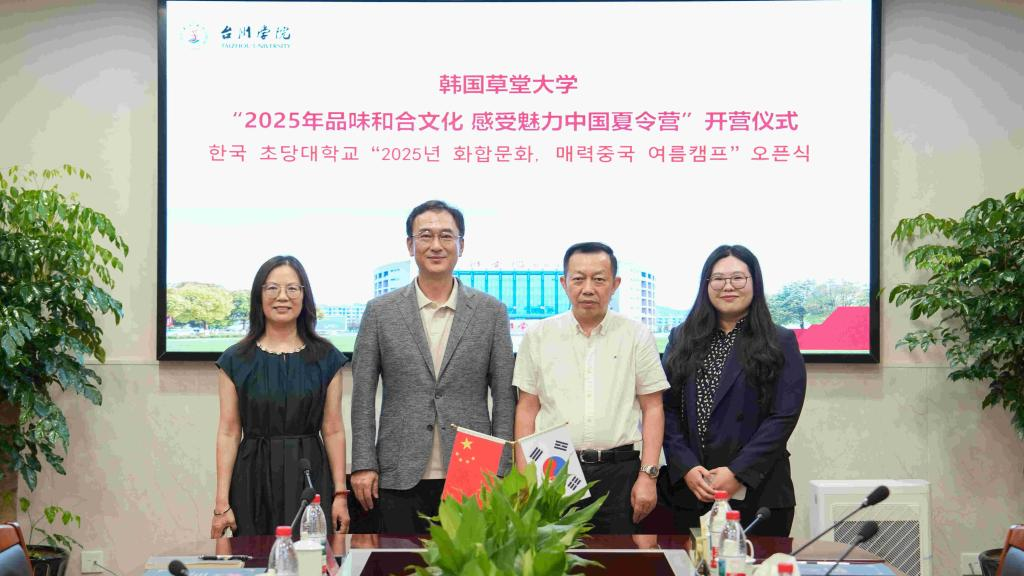
Taizhou University President and Deputy Party Secretary Le Chuanyong meeting the delegation from Chodang University, South Korea
On the morning of September 11, the opening ceremony for the “2025 Appreciating Hehe Culture, Experiencing Charming China Summer Camp” was held in the first conference room of Taizhou University’s Jiaojiang campus. President and Deputy Party Secretary Le Chuanyong met with the delegation from South Korea’s Chodang University, led by Professor Ren Zhenhao, Dean of its International Exchange and Education Institute. The ceremony was presided over by Wang Aiqin, Deputy Director of the International Office.
On behalf of the university, Ms. Wang delivered a welcome speech. She noted that TU and Chodang University have maintained a sister-school relationship since 1999, making this year the 26th anniversary of their partnership. She described the summer camp as a significant milestone in this enduring relationship and a practical initiative to foster international understanding and humanistic literacy among students. Ms. Wang expressed her hope that the visiting students would cherish this opportunity to observe, listen, think, and communicate with an open mind. She encouraged them to not only appreciate the local “Hehe” culture and the charm of Chinese civilization but also to contemplate the importance of dialogue, mutual learning, and harmonious coexistence between different cultures. She concluded by wishing that their journey to Taizhou would become a precious life memory, sowing seeds of friendship and yielding knowledge and growth.
Professor Ren Zhenhao then addressed the ceremony, reflecting on the history of friendly exchanges between the two institutions. He highlighted the particularly active interactions since December 2023, noting that from September 2024 to August 2025, three groups of TU students would undertake short-term study programs at Chodang University, accompanied by three visiting faculty members. He also mentioned that Chodang University had sent a “Harmonious” culture study group to Taizhou in July 2024. Professor Ren thanked TU for its warm reception and thoughtful arrangements for this current delegation of aviation majors. He expressed his desire for the two universities to continue growing together through sustained cooperation and offered his sincere wishes for TU’s continued prosperity.

The opening ceremony
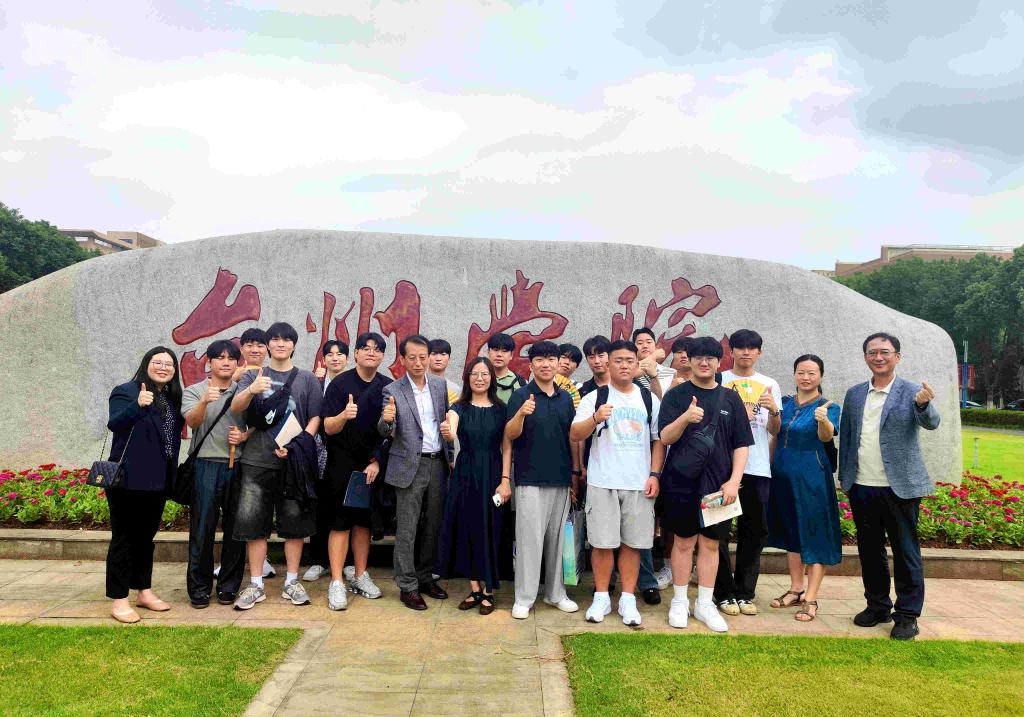
At the university monument stone
Following the ceremony, the delegation visited the School of Aeronautical Engineering. They toured the large UAV exhibition hall, the wind tunnel laboratory, and other research facilities. The group also attended a special lecture titled “Low-Altitude Economic Development and UAV Major Construction,” delivered by Professor Hu Xu.
Professor Hu systematically introduced the low-altitude economy as a new productive force, detailing its development trends, application scenarios, and types of aircraft. He also elaborated on the talent cultivation objectives, program characteristics, student competition achievements, and graduate career paths of the university’s UAV major. The lecture featured active interaction between Chinese and Korean teachers and students, creating a lively and engaging atmosphere.
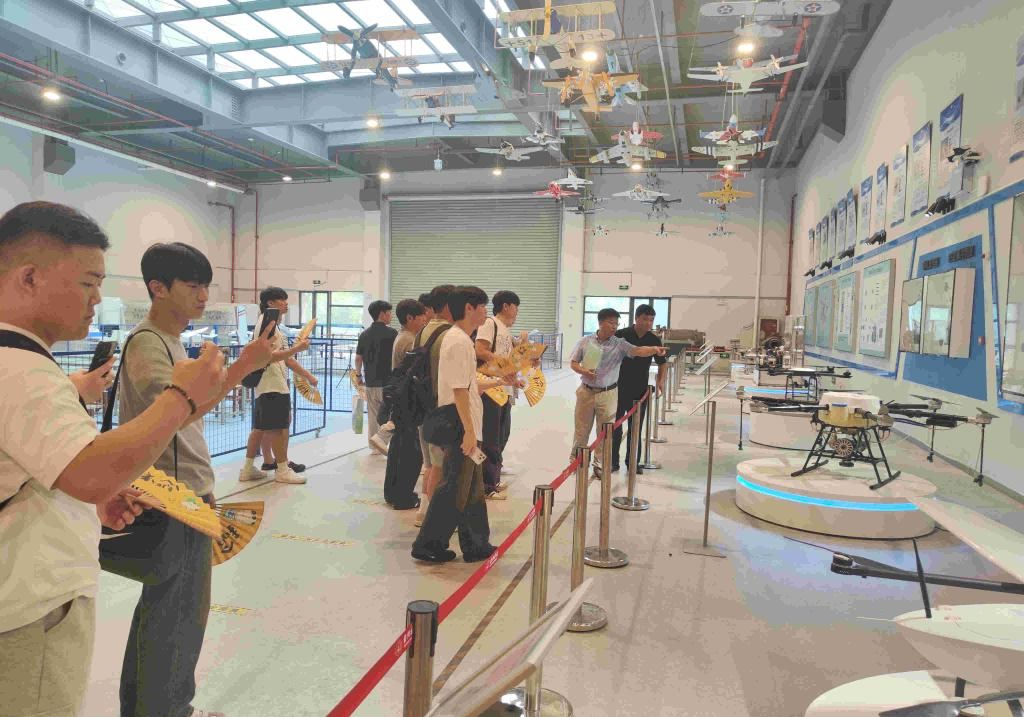
Visiting the large UAV exhibition hall
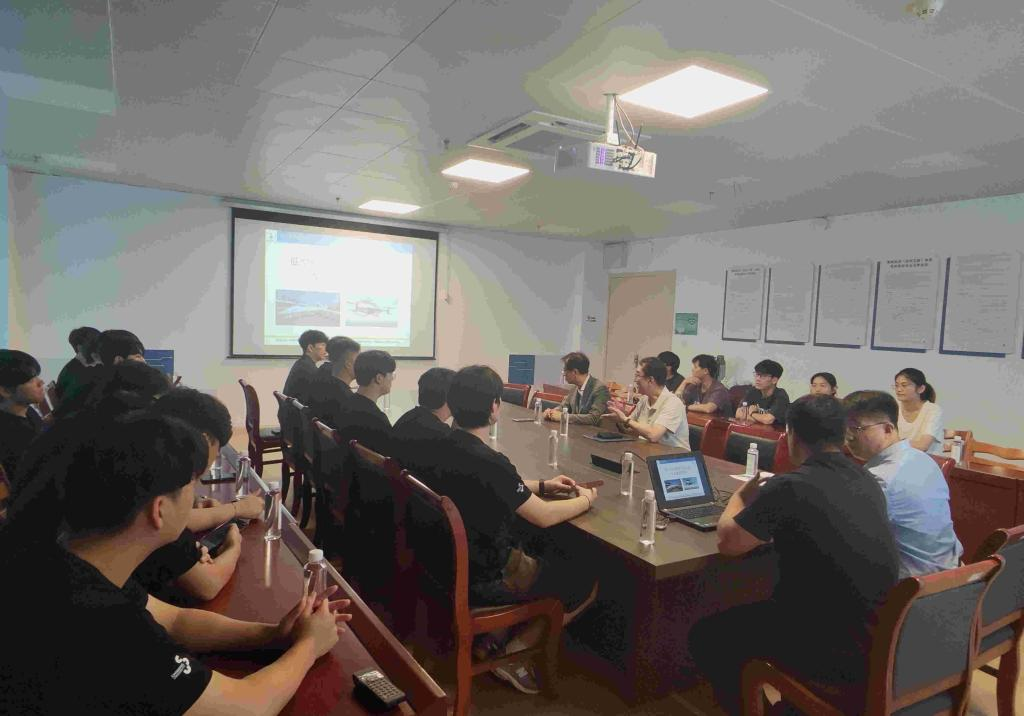
Listening to the lecture
That afternoon, the delegation visited the Taizhou Bay Agglomeration Area Planning Exhibition Hall and the UAV Command Center of the Aviation Economic Industrial Park. At the exhibition hall, they gained in-depth insight into the area’s overall development plan, industrial layout, and future vision. The visit to the command center included a specialized briefing on the current state and prospects of low-altitude economic development. This segment of the tour broadened the visitors’ horizons and gave them an intuitive understanding of the region’s tech-economic integration. The students expressed great admiration for the rapid development and impressive achievements of China’s UAV technology and industry.
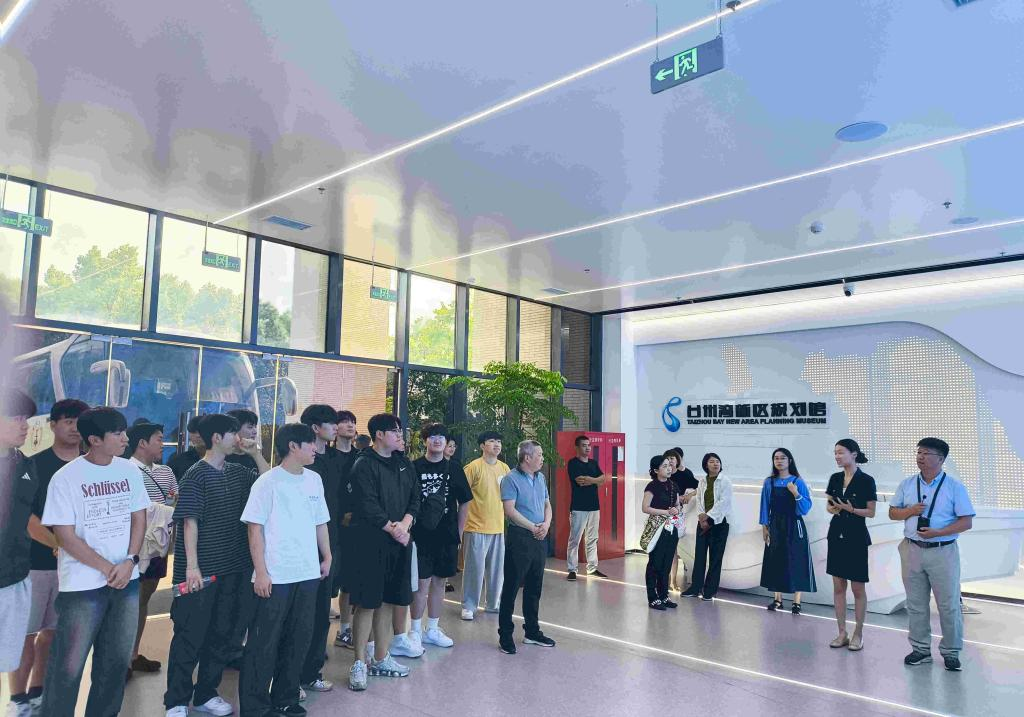
Visiting Taizhou Bay Agglomeration Area Planning Exhibition Hall
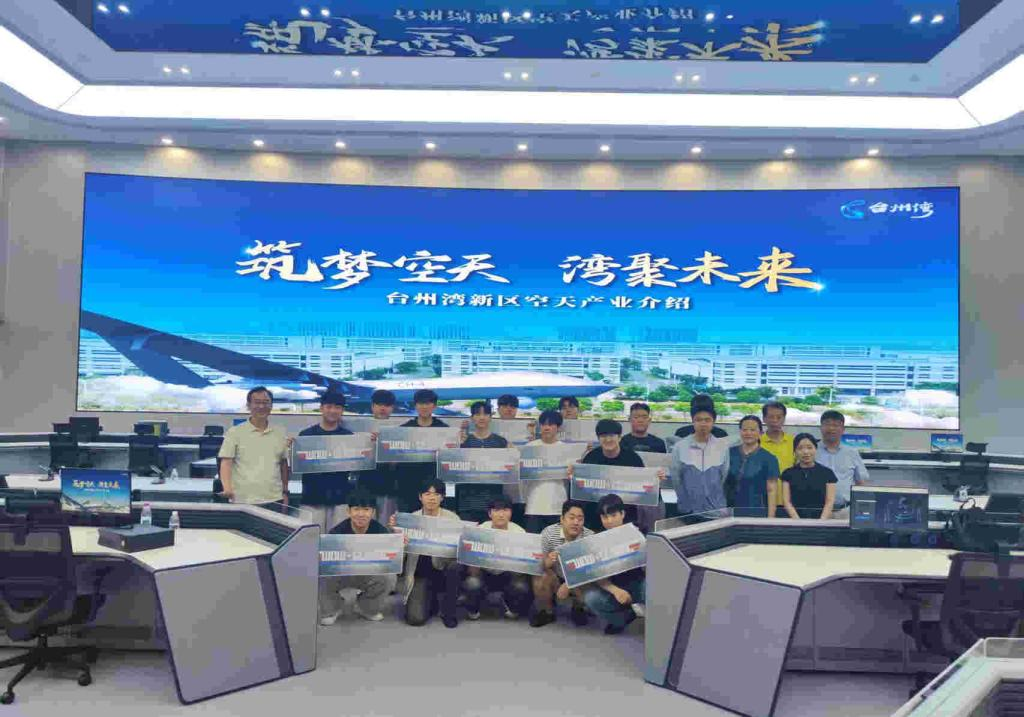
Visiting the UAV Command Center of the Aviation Economic Industrial Park
On September 12, the delegation traveled to Tiantai to visit the Tiantai Mountain Grand Waterfall, renowned as “China’s No. 1 Waterfall.” As the starting point recorded in Xu Xiake’s Travel Notes, this sacred site is famous for its stunning landscapes and its status as an ancestral home of Buddhism and Taoism. The Korean teachers and students walked the glass skywalk and traversed the Qiongtai Immortal Valley, marveling at the magnificent waterfall and the unique surrounding Danxia landform. The thrilling experience of seemingly “treading across the waterfall in the air” left a deep impression.
Later, at the Hehe Culture Park, the group participated in a hands-on workshop to create a traditional mortise and tenon craft. They learned about the “One Vine” technique, a Zhejiang Provincial Intangible Cultural Heritage item. This unique craft, originating from the Ming Dynasty, uses wooden structures and mortise-and-tenon assembly to simulate the spreading form of a vine, representing a form of Eastern installation art. After the introduction, the students tried their hands at assembling the representative Luban Lock, engaging in a friendly group competition that was both educational and enjoyable.
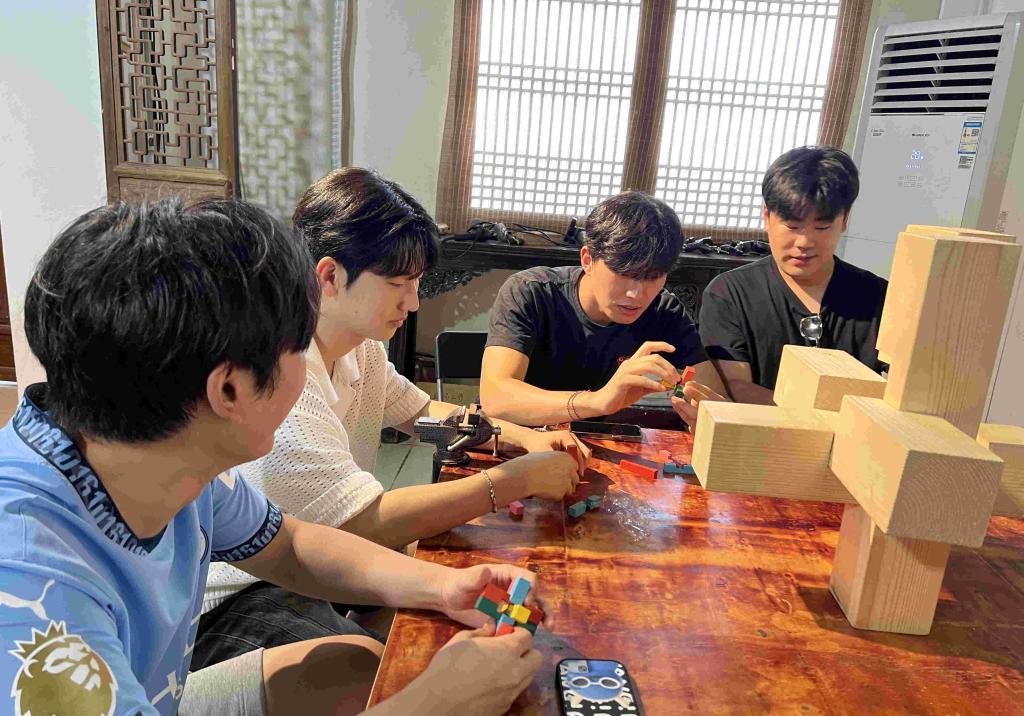
Students assembling the Luban Lock
In the evening, the group strolled through the millennial-old Zhexi Old Street, the core preserve of Tiantai’s ancient city charm. With its flowing streams, ancient architecture, integrated poems, and shop plaques, the street felt like an open-air museum of culture. The Chodang University delegation immersed themselves in the brilliant night scenery and dazzling light shows, sampled authentic local snacks, and explored various cultural and creative spaces.
On September 13, the group arrived in the ancient capital of Hangzhou. They explored the antique Hefang Street, wandered by the scenic West Lake, and experienced the local customs and traditional handicrafts of the Southern Song Imperial Street. Subsequently, they visited the Songcheng scenic area to watch the large-scale live performance “The Romance of the Song Dynasty.” The stunning performance, which vividly recreated historical scenes from Hangzhou’s past through exquisite stagecraft, drew exclamations of admiration from the audience, giving them a deeper appreciation of the city’s long history and cultural richness.

Visiting the West Lake
The final stop was Shanghai, China’s dynamic financial and fashion capital. The visitors were thrilled by this international metropolis. During a car tour, they photographed the magnificent scenery of the Bund and Lujiazui. On Nanjing East Road, they immersed themselves in the bustling, diverse atmosphere, hearing a multitude of languages and directly experiencing the city’s openness and vitality. By the Huangpu River, they were amazed by the stunning contrast between the historical buildings of the Bund and the modern skyscrapers of Lujiazui. When the city lights lit up at night, the splendid view allowed the group to fully appreciate Shanghai’s unique charm as a global city.

On Nanjing West Road
Upon completing the itinerary, Professor Ren Zhenhao reflected on the trip: “The arrangements for this activity are excellent, and the students are very satisfied. Thank you very much!”
This summer camp not only enhanced Korean students’ understanding and appreciation of Chinese culture, particularly Taizhou’s Hehe Culture, but also fostered meaningful interaction between Chinese and Korean youth in the fields of culture, technology, and history. The program’s emphasis on experiential learning—through hands-on operation, personal observation, and direct engagement—showcased the authentic, multi-dimensional faces of Taizhou, Hangzhou, and Shanghai. It successfully helped establish a more comprehensive and genuine understanding of China while laying a solid foundation for the continued development of international projects between the two universities.